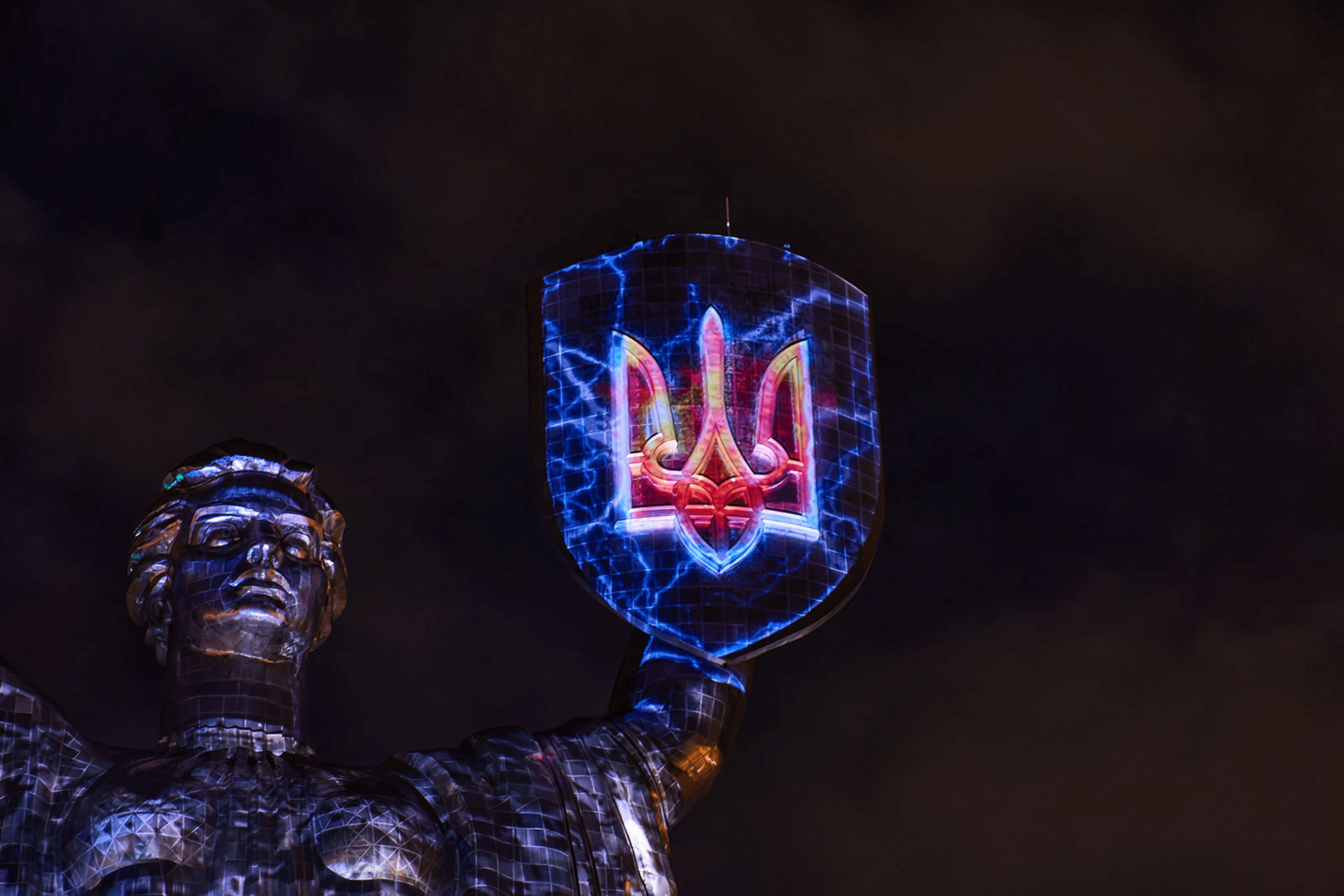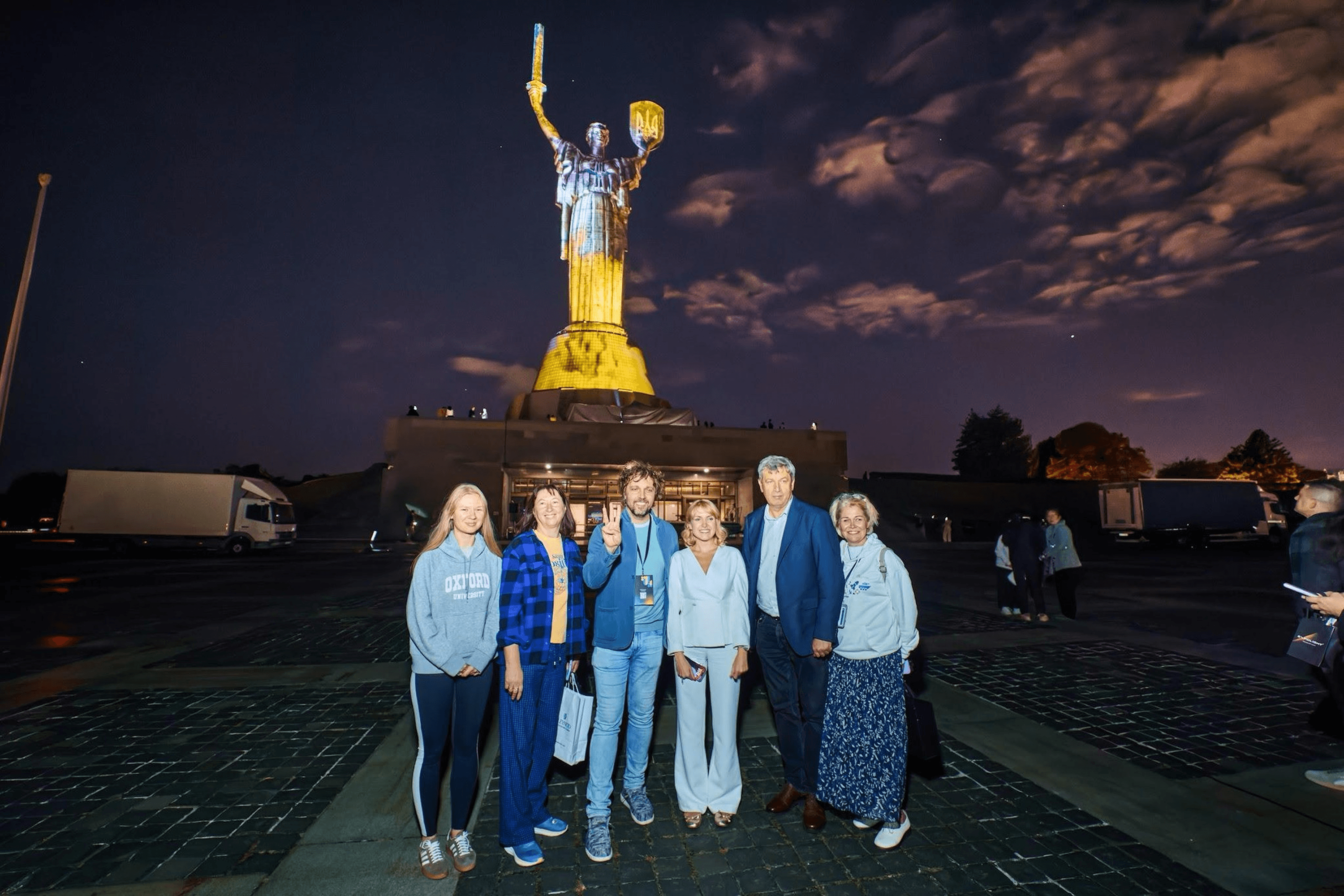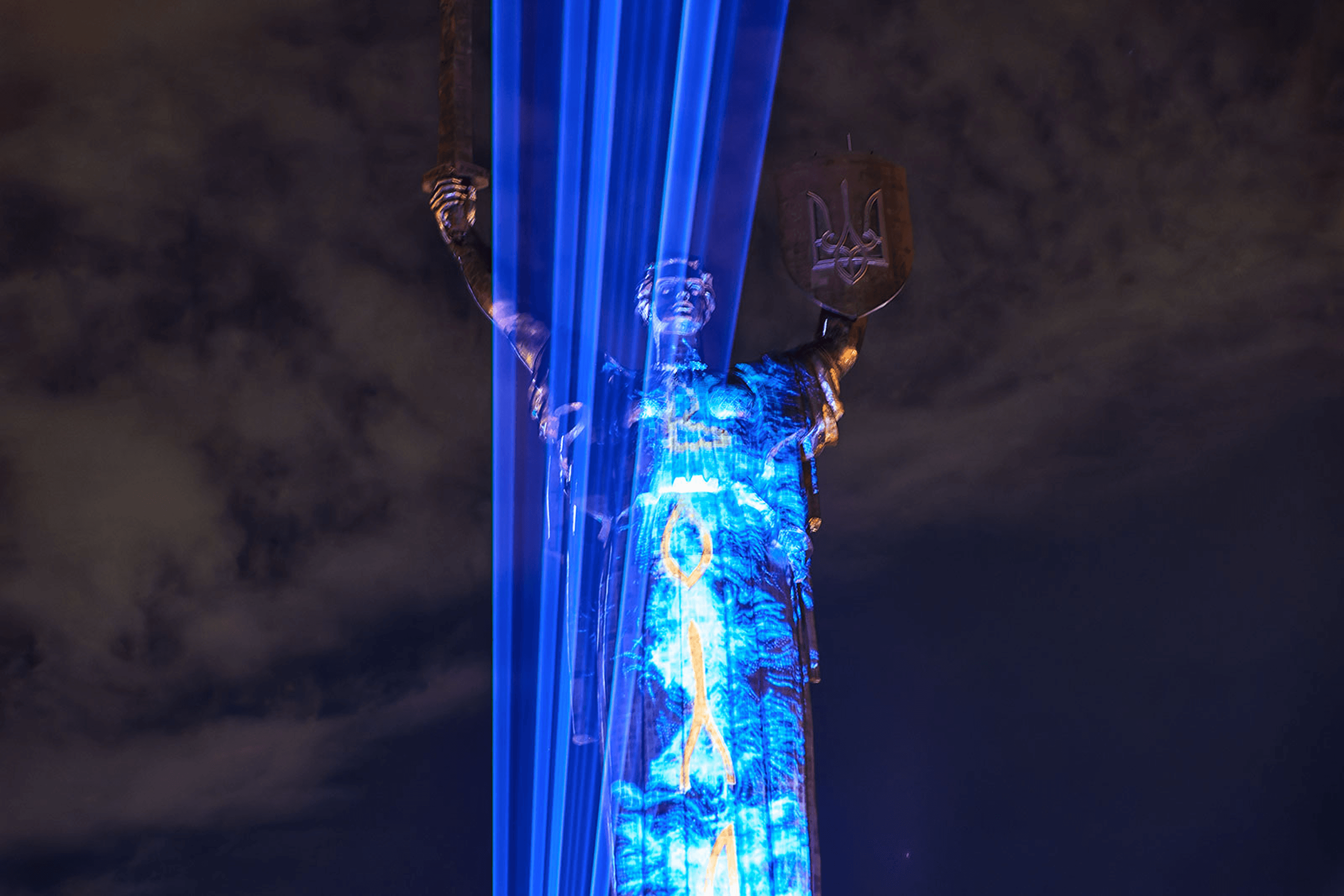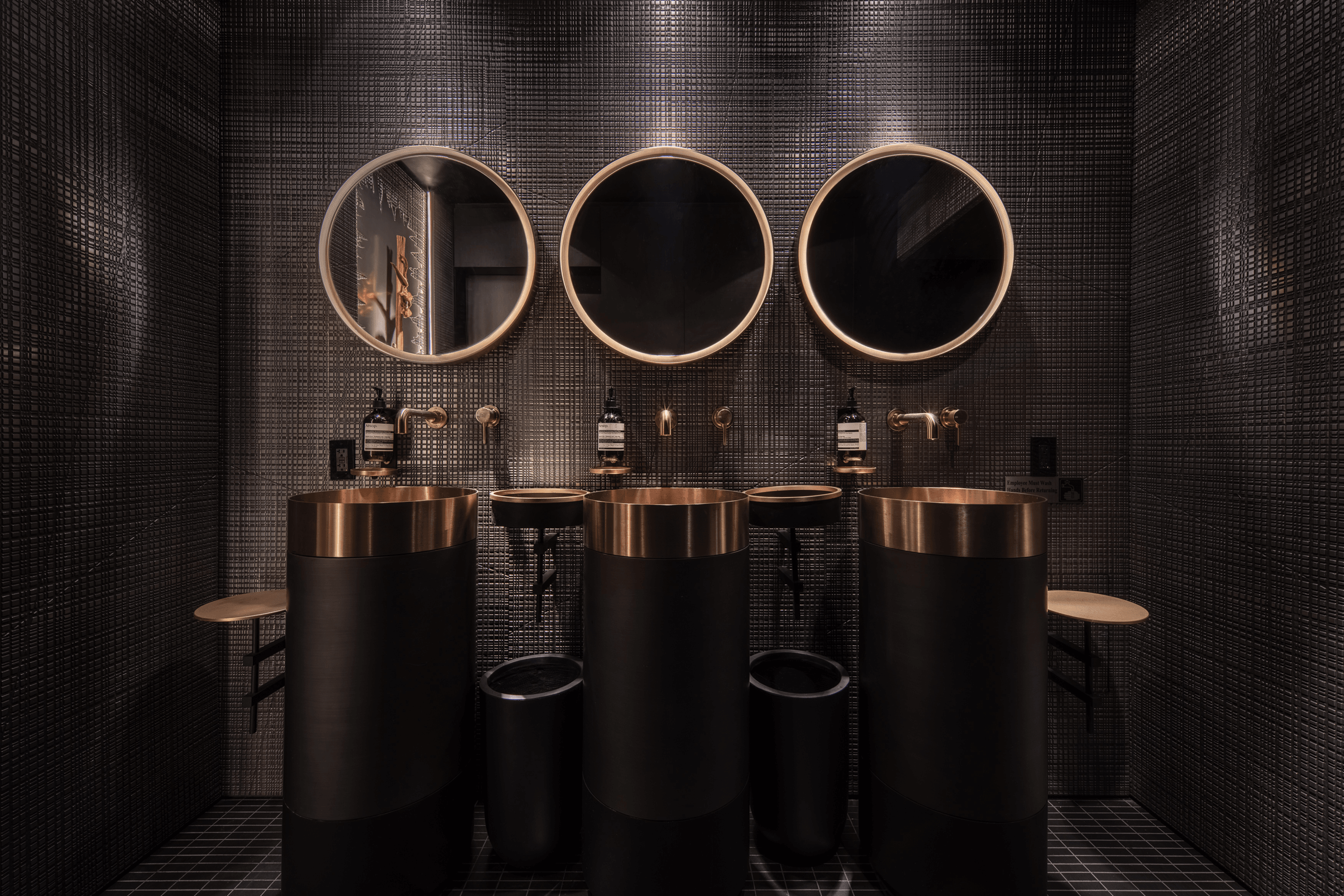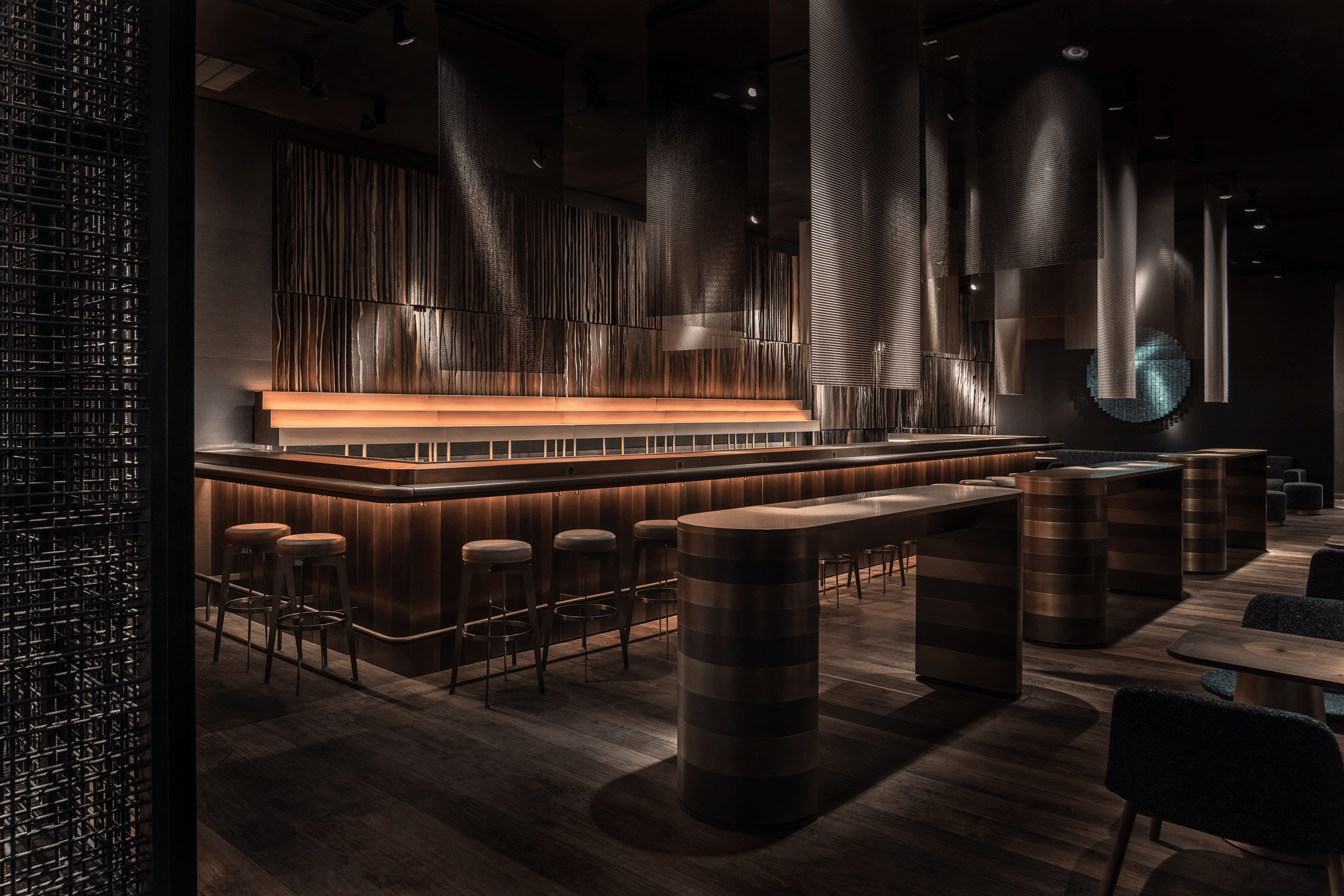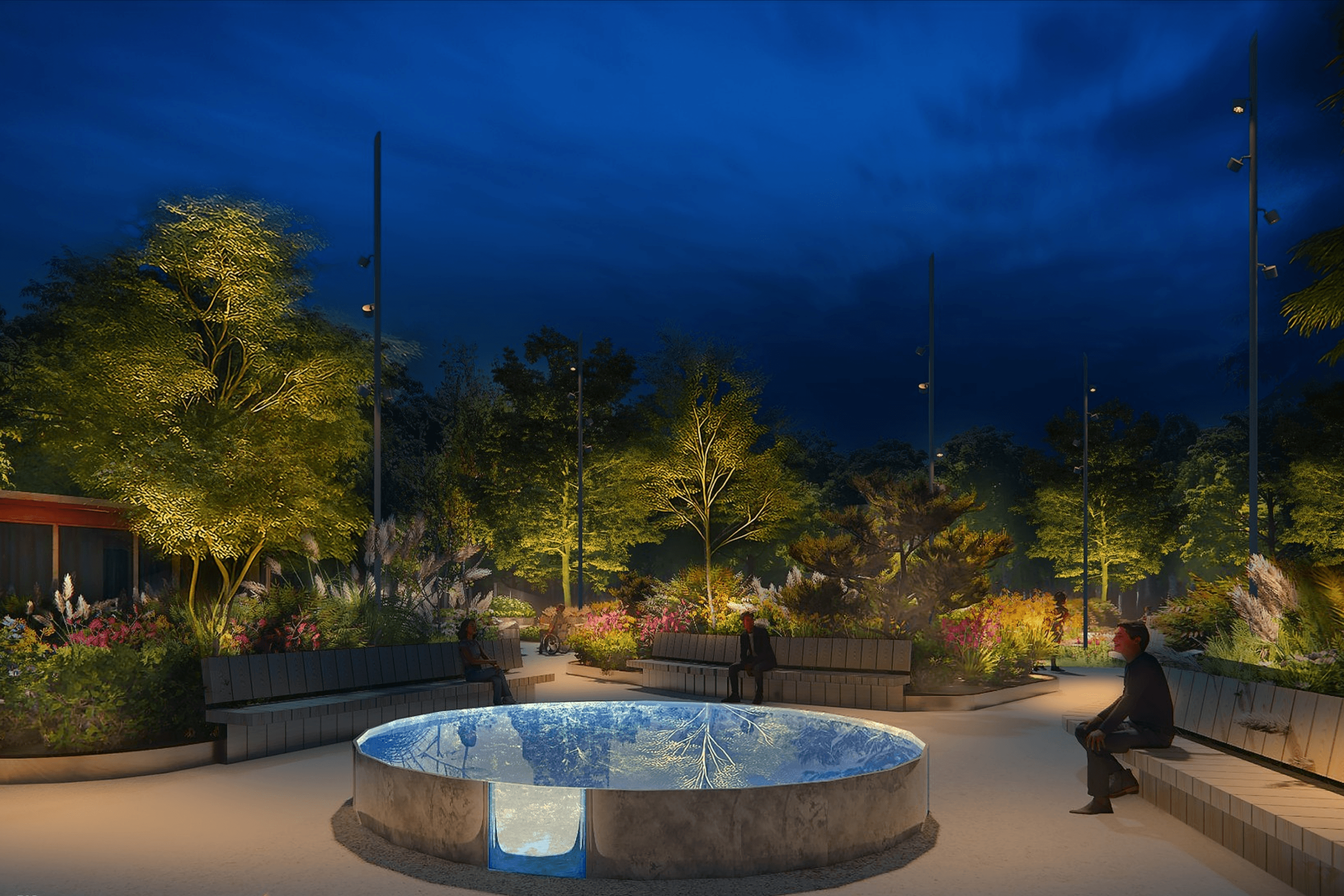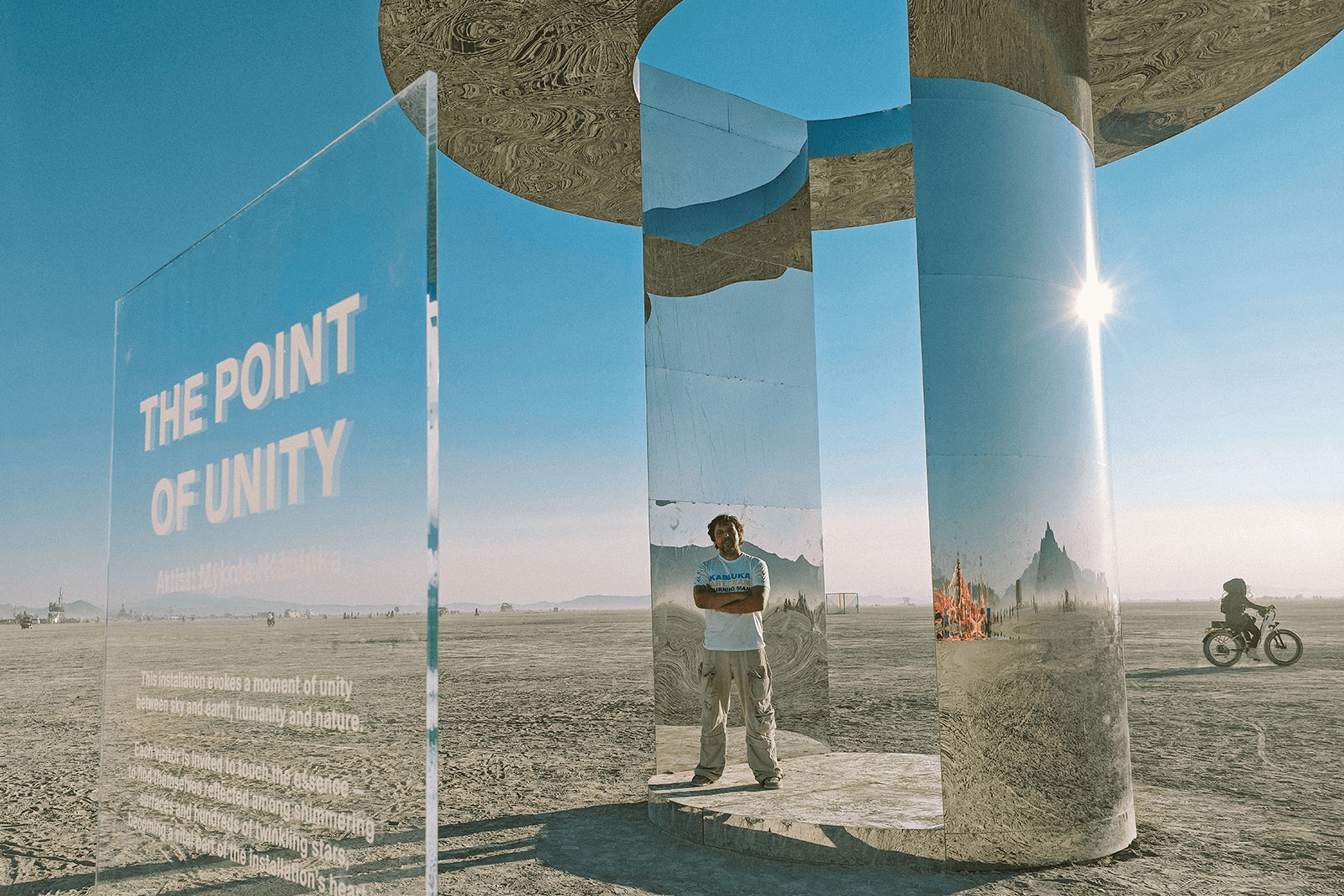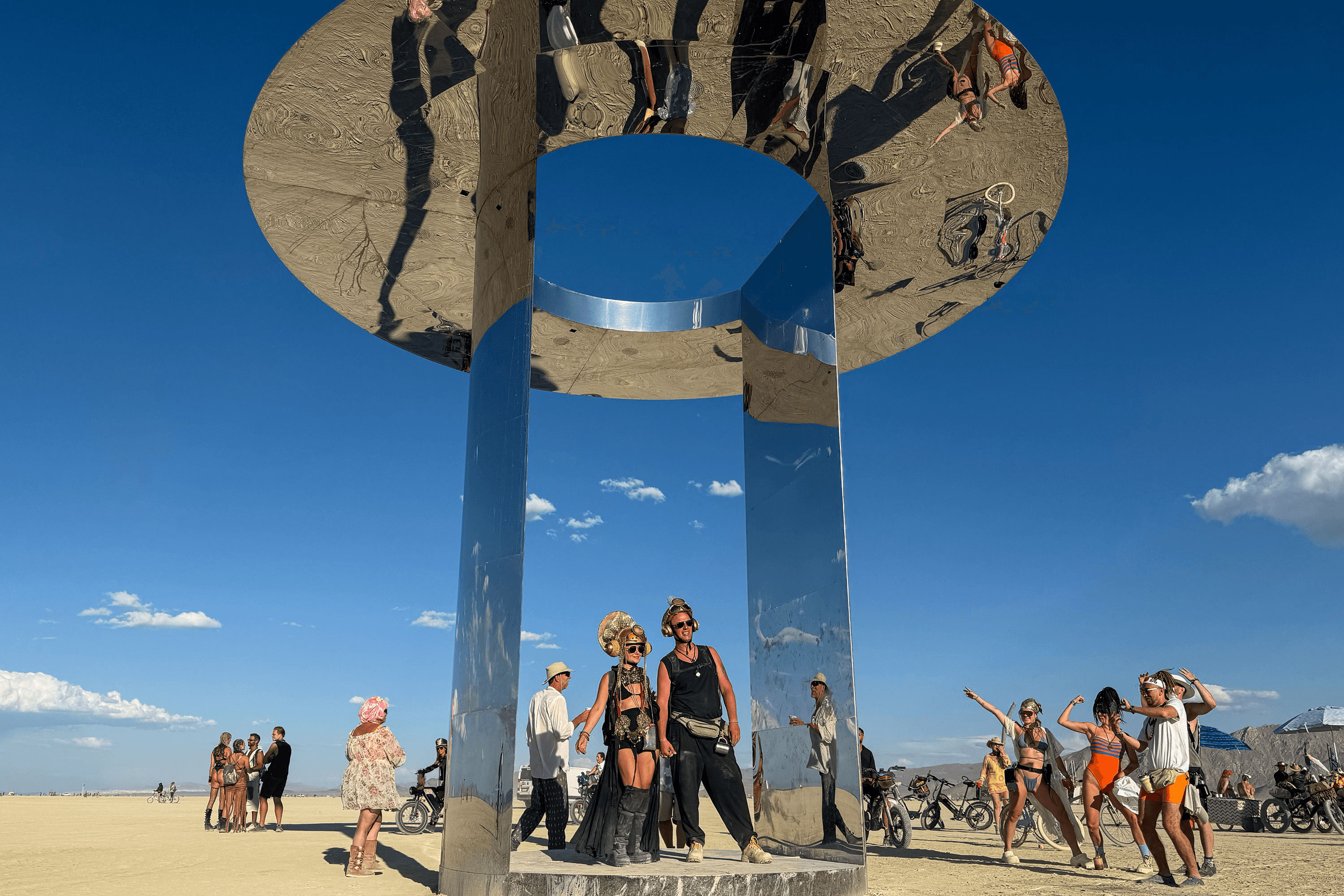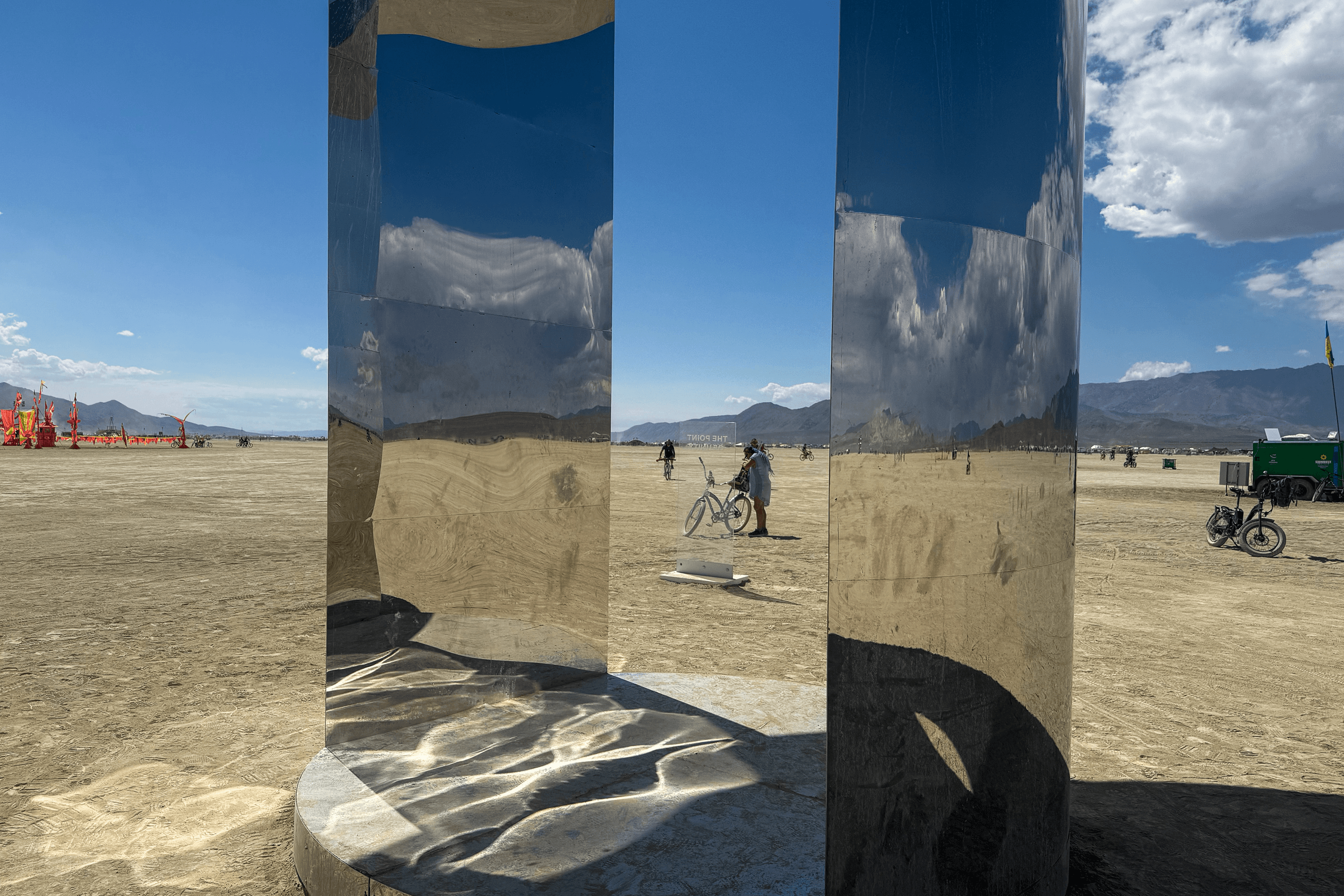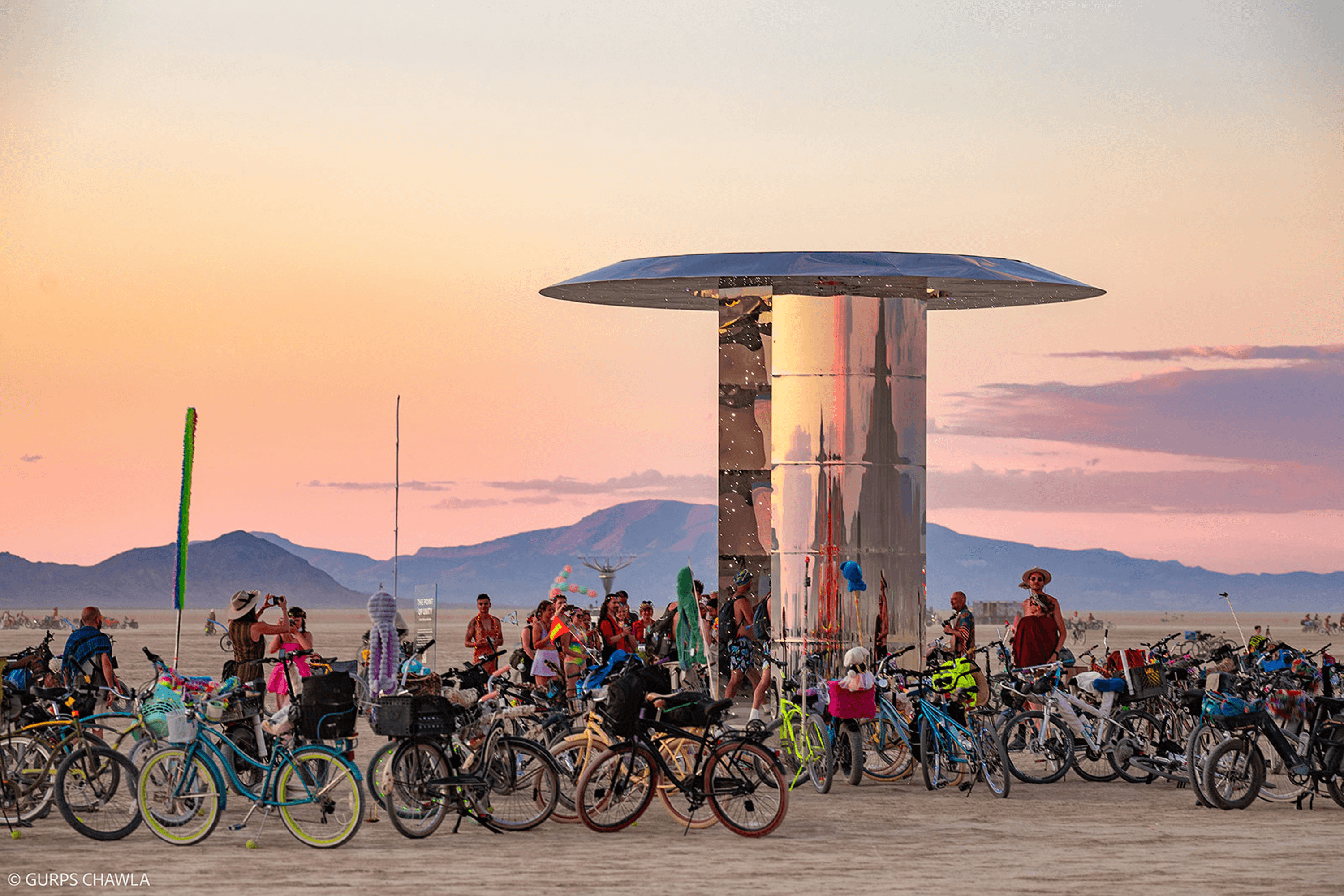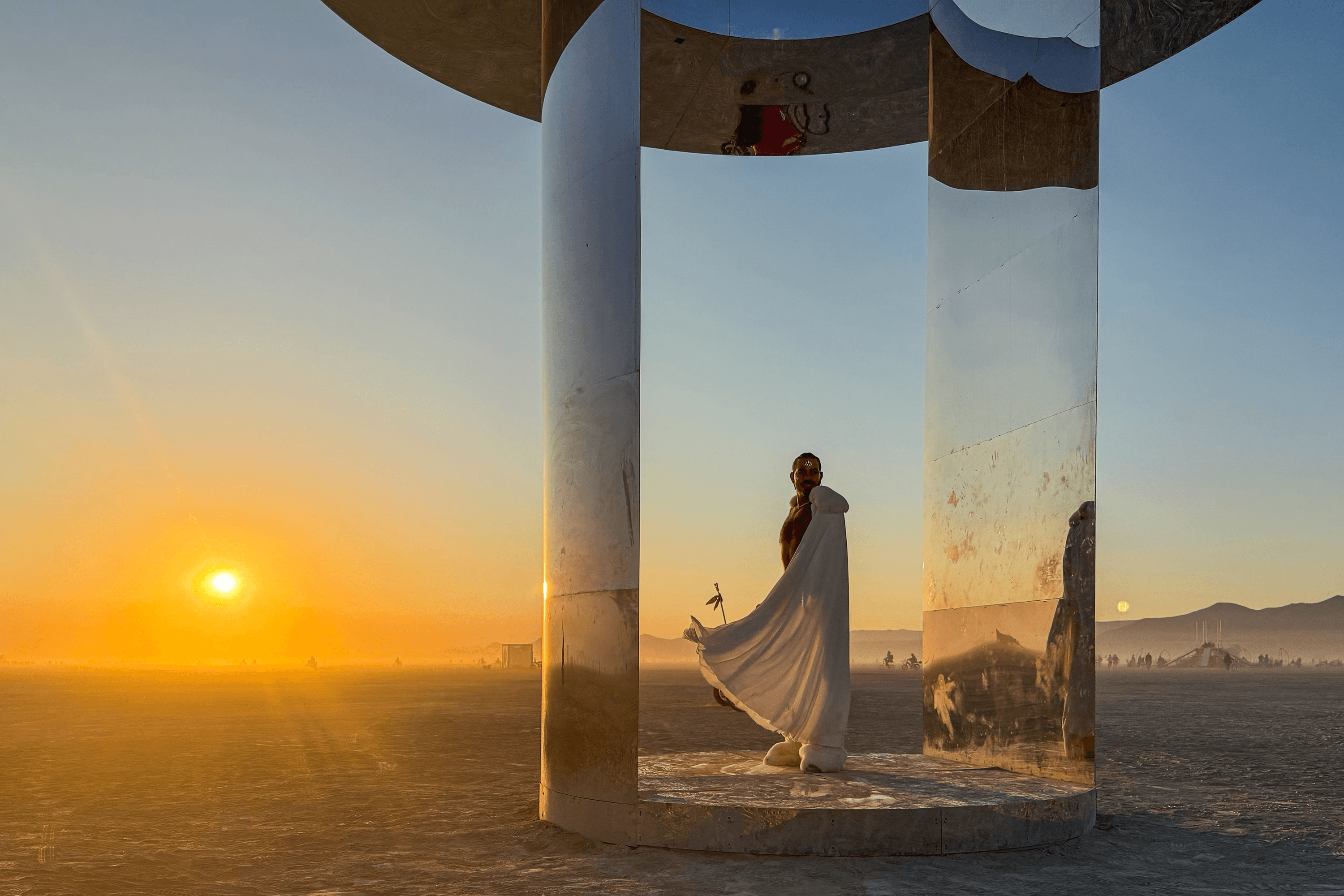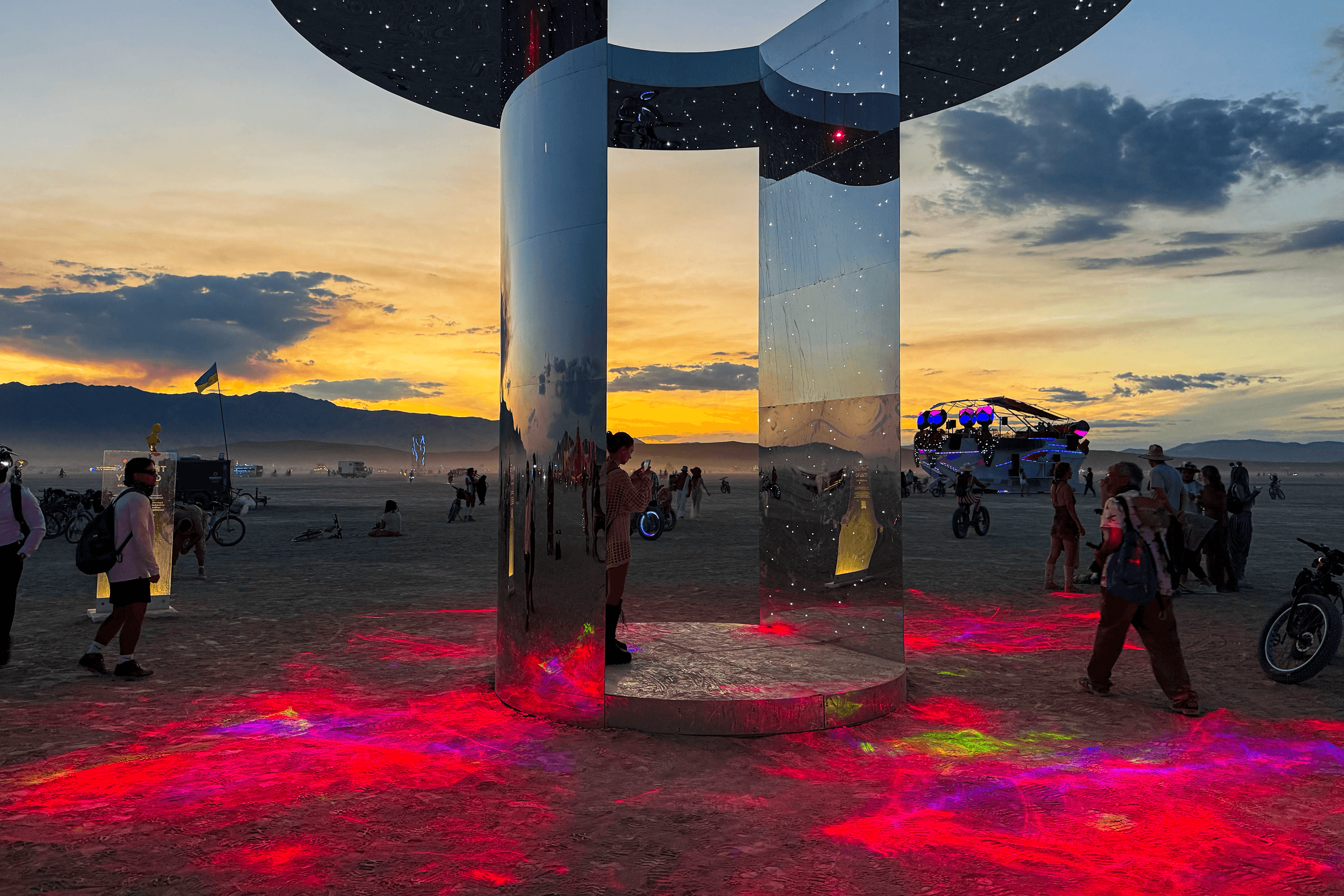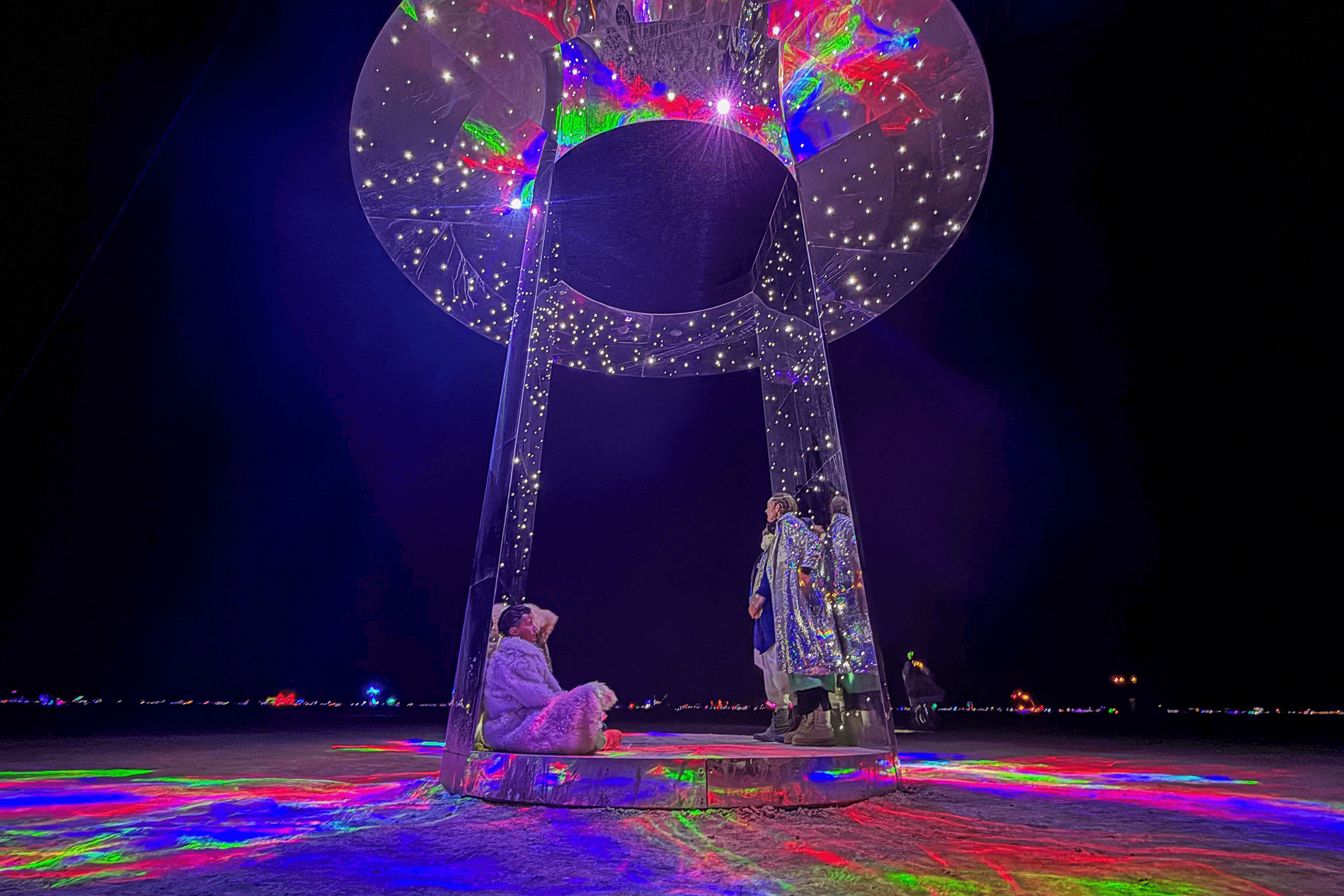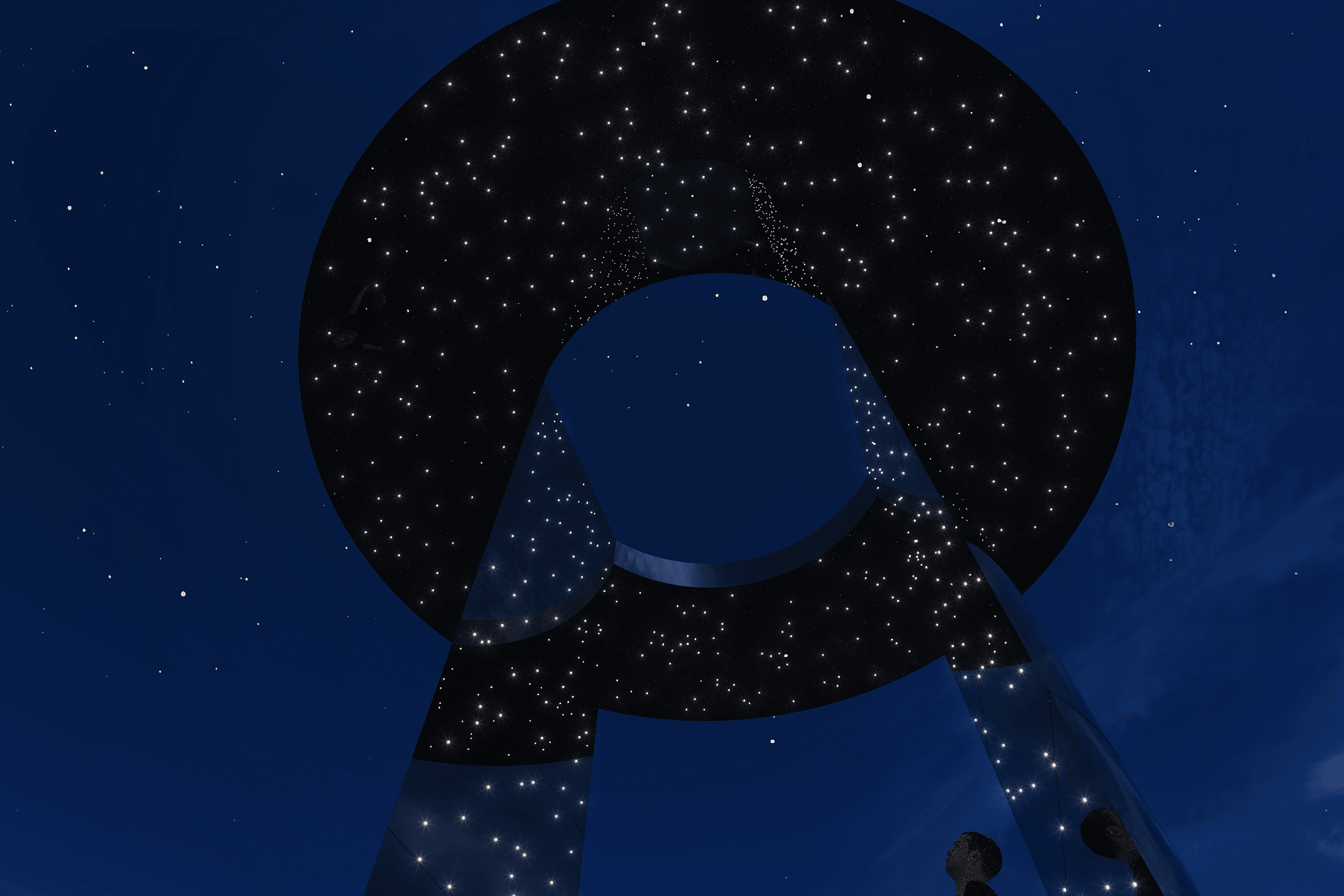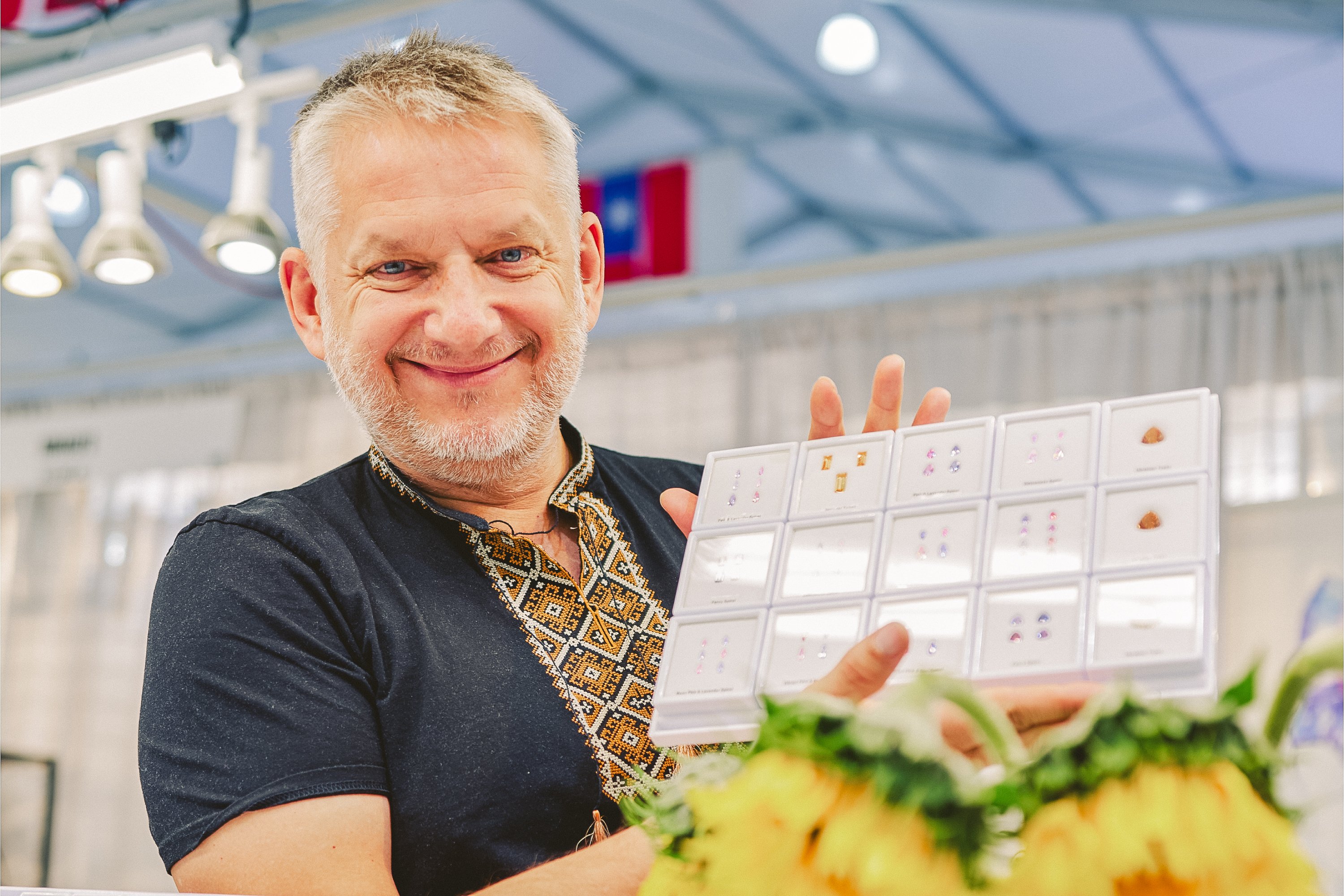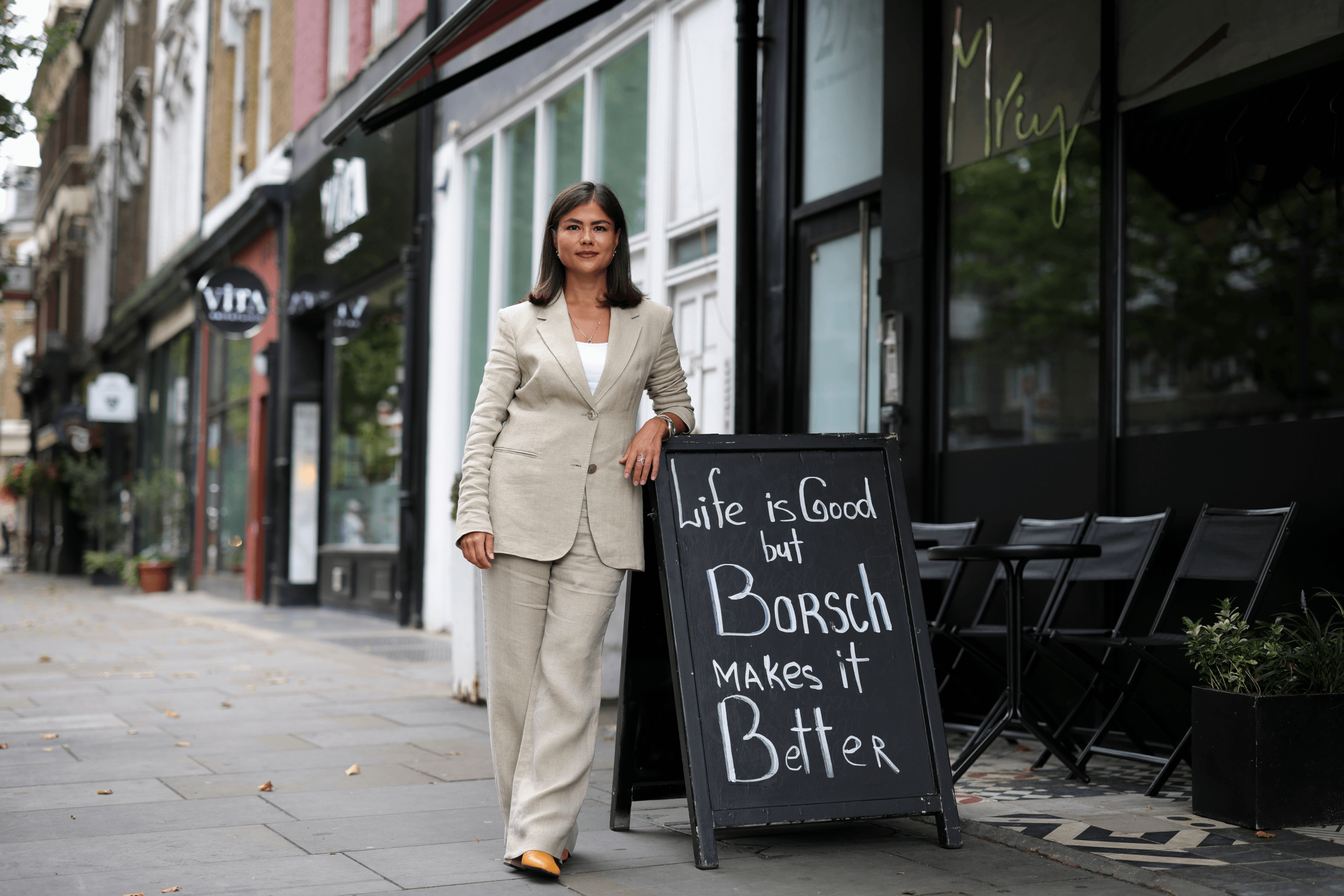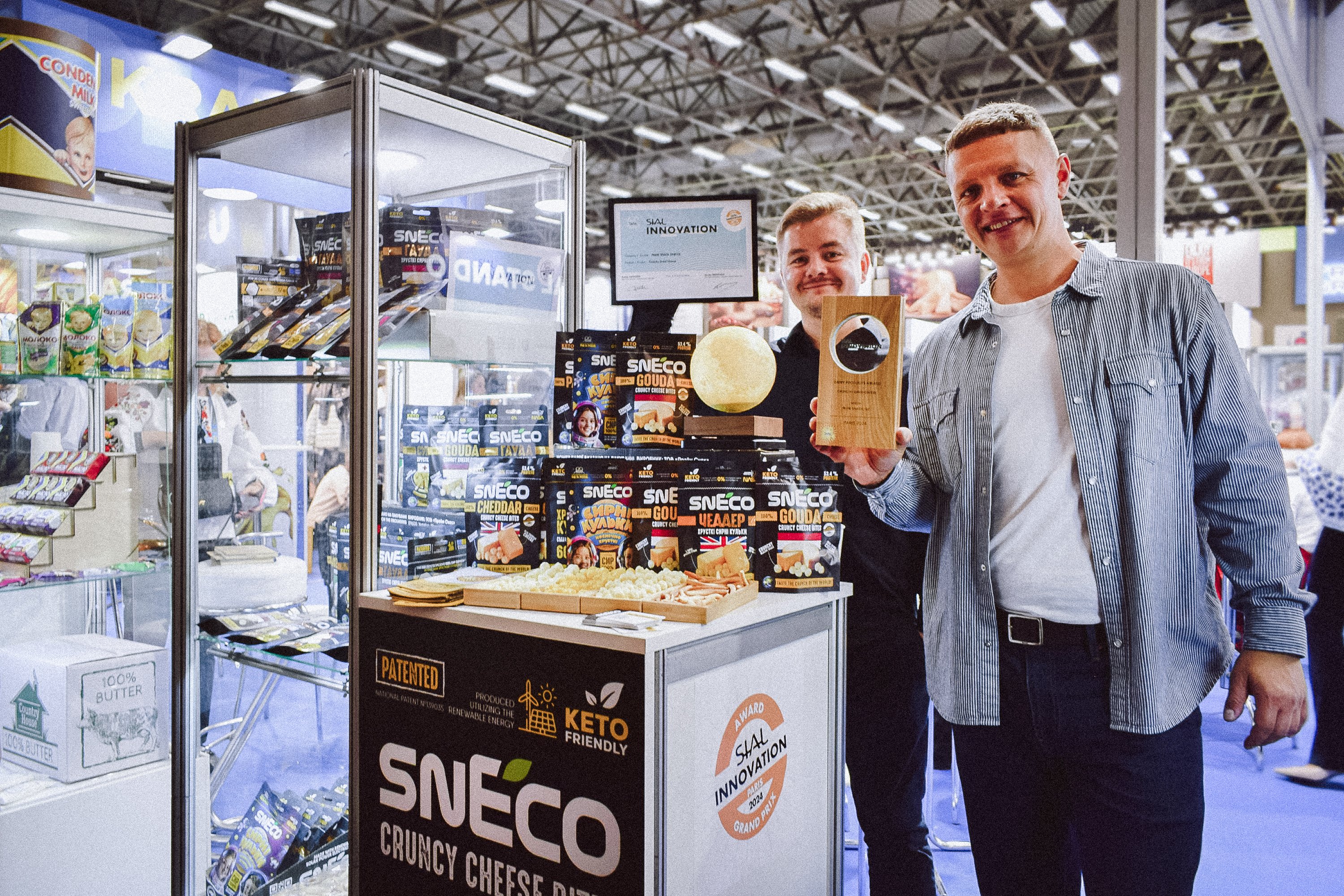At 47, Mykola Kabluka from Dnipro turned a borrowed $600 into Expolight, a company delivering multimillion-dollar projects around the world. He launched the business in 2000 after a trip to Poland, where he was inspired by the illumination of Gothic architecture. From just three people — including his mother — Expolight has grown to 80 employees and more than 2,000 completed projects, earning 94 professional awards, 33 of them during Russia’s full-scale war against Ukraine.
Among the company’s key works are the Menorah Center in Dnipro; Kyiv’s residential complexes Taryan Towers, Jack House, and Tetris Hall; and New York’s Buddha Bar. Despite an annual turnover of $15 million, Kabluka often chooses ideas over pure commerce: the garden at VDNG, the Cross of Heroes in Vyshhorod, and the Babyn Yar memorial.
In 2025, he represented Ukraine at the Burning Man festival with the sculpture The Point of Unity, where nearly 30 weddings took place. YBBP journalist Roksana Rublevska spoke with Mykola about how, without investment or connections, he built a company reshaping the world’s perception of architectural lighting.
When did the idea of working with light first come to you?
As a student, I worked in light advertising, but the turning point came when I saw Gothic architecture illuminated in Poland for the first time. At night, it looked even more majestic than by day. That’s when I decided I wanted to create something similar in Ukraine. A few years later, on December 25, 2000 — Christmas Day and, symbolically, the “birthday of light” — I registered Expolight. It was an intuitive startup with no business experience to my name, but I took the risk. Today, 25 years later, Expolight is among the world leaders in architectural lighting and light design.
You come from an engineering family and studied applied mathematics. Did that help you at the start of your business journey?
At university, I was one of just two students without a personal computer. I did my lab work at friends’ dorms or in the department labs. To start the company, I borrowed $600 and bought a computer, my first and only startup investment.
How did you find your first clients in Ukraine in the 2000s, when architectural lighting wasn’t yet a thing?
Back then, many thought the idea of lighting was nonsense. I used to walk around Dnipro, offering my services everywhere — from car washes and banks to shops and offices. I was showing sketches and convincing people that lighting could change how a business was perceived and add aesthetic value. When the first renovations started in Ukraine, someone at the city council remembered: “There’s a guy from Dnipro who does this.”
At that time, I was doing everything myself: finding sample contracts, working on lighting calculations, drawing sketches in Photoshop, and even building brackets. I only brought in contractors for specific tasks, like making brackets, running cables, or installing fixtures. I was coordinating the entire process, sourcing and refining the projectors, and adding lenses to get the right lighting effect.
Your company’s first major projects weren’t in Dnipro but in nearby Zaporizhzhia. How did that start?
The mayor back then, Oleksandr Polyak, initiated a project to update the central Lenin Avenue (now Sobornyi Avenue) and illuminate Stalin-era apartment buildings to highlight their architectural value. Inspired by European experience, he received a recommendation to work with me. At the same time, I was working on the lighting design for Nobel University in Dnipro. These projects became my starting point.
But you had neither resources nor experience. How did you convince potential clients that you could handle it?
There were no investments — only advance payments. At the time, I didn’t have a car or a driver’s license, so I got to meetings in Zaporizhzhia by hitchhiking. I looked very young and was often not taken seriously. That’s why I didn’t waste time on long explanations; I showed the idea in person. That’s why I didn’t waste time on long explanations and showed the idea in person: I set up the spotlights, connected them using portable power strips, and demonstrated the future effect. There were only two of us in the company, and we did everything ourselves—from calculations and drawings to working with contractors. In Zaporizhzhia, we illuminated factory buildings, the Ukrposhta office, and the Stalinist-style towers along the avenue. These were some of the very first systematic architectural lighting installations in Ukraine, which quickly drew attention in Kyiv as well.
How many people did the business start with, and how many work there today?
The company started with three people. A friend helped with the technical side, and my mother, Iryna Mykolaivna, handled organizational matters. We found our first office thanks to her, in a building of the former design institute, which had fallen into disuse after the USSR collapsed. Today, our team has 80 people, all Ukrainians. We grew organically in proportion to the number of new orders.
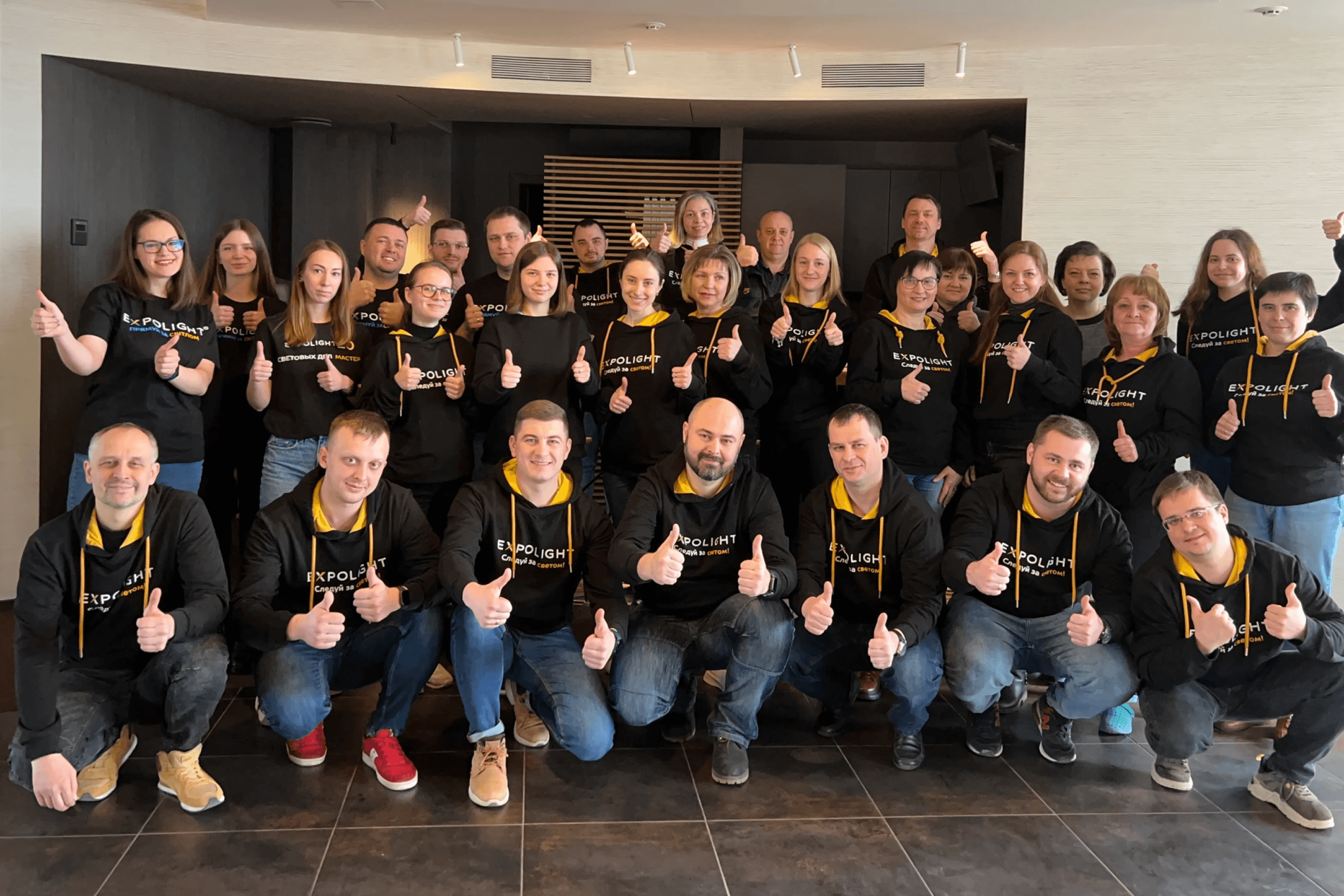
How do you build your team?
We rarely hire fully trained specialists. More often, we invite students and invest resources in their development. The main thing is to choose people with the right core values, passionate about their work. Professional skills can be developed over time.
For me, it’s important that every team member understands: we create a product not just to make money, but to share meaning. We use light as a tool to create emotions.
Our company has five key departments: project management, design and conceptual planning, engineering, service and commissioning, and production and modernization.
So can your company be considered a family business?
Yes. The most important women in my life — my mother, my sister Olena, and my wife Hanna — are involved in the business. My mother supported me at the start, my sister became CEO and oversees operations, and my wife Hanna leads one of the departments. Interestingly, all of them studied applied mathematics. Maybe that’s why we understand each other so well: mathematics gives a naturally structured way of thinking.
How did you integrate into the professional community?
From the very beginning, I believed it was essential to participate in international and national association competitions. These are platforms where professional critics recognize the best work and encourage the industry’s growth. For me, it was important not to stay closed off in Ukraine but to showcase my solutions globally. At the time, my English was basic and lacked practice, but I learned on the fly, memorizing key phrases to at least present projects. The first money I earned went toward attending conferences — they let me see the global industry standard and receive critical feedback. Participating in competitions opened doors to key professional associations — IALD and IAS — which allowed me not only to present my own projects but also to look up to the world’s best.

You mentioned that you don’t aim for large-scale growth. Why is that?
For the past seven years, I’ve deliberately limited growth. We don’t want to become a corporation because maintaining an author-driven culture and freedom to choose projects is more important. That’s why we turn down most orders, don’t open branches, and don’t build a sales department. All clients find us themselves, and we take only one project out of every ten.
What is your role in the company today?
I am the founder, designer, art director, and chief architect. I build a team for each project, set the creative strategy and key objectives, and manage strategic communications with clients. I delegate finances and routine tasks, but in unusual situations, I am always personally involved.
Who are your typical clients?
Our clients fall into two groups. The first are architects, who develop the concept and bring us in during the design phase to integrate our technologies and artistic solutions. The second are direct clients: developers and owners of restaurants, shopping centers, or office buildings.
Which projects were the most important to you between 2008 and 2021?
There were many landmark projects. One of the first major ones was for the Menorah Center in Dnipro, the largest Jewish community center in the world. In Kyiv, we worked on Taryan Towers, Jack House, and Tetris Hall — city landmarks with budgets over $1 million each.
In 2018–2019, we completed Buddha-Bar in New York near the World Trade Center, with holographic effects appearing every 10 minutes.
Just before the full-scale invasion, we created one of our most emotional projects — the synagogue in Babyn Yar, designed by Manuel Herz in collaboration with the Babyn Yar Holocaust Memorial Center. It was a large illuminated book that transformed into the shape of a synagogue, where people went inside to see the sky.
How did Russia’s full-scale invasion of Ukraine affect your business?
By fall 2021, I could already sense the war was coming. When the first explosions began, I went to the office: distributed money to contractors and and coordinated who was leaving and who was staying. We turned the office into a “resilience hub” — with a generator, backup heating, a well, and Starlink. We stayed and continued working.
During the war, how did you balance international projects that generate income with supporting Ukraine?
Our company continues executing international projects while also supporting local initiatives. For example, we recently created a therapeutic garden at VDNG for people with injuries and PTSD, funding the lighting and completing the design work for free. Our principle is to remain in Ukraine, investing in both business and culture.
Tell us about your philanthropic project Cross of Heroes, created for the second anniversary of the full-scale war.
Cross of Heroes is a counter-form sculpture that people can enter. Inside, hundreds of small lights are illuminated — a symbol of those who continue to believe, fight, and inspire. The light is fragile but undying; a person feels like they are part of the endless radiance. The atmosphere is enhanced by immersive sound recorded from various corners of Ukraine: from the Donbas steppes to the Carpathians, from northern forests to the sea at Mariupol, Crimea, and Odesa. It is the voice of the native land, surrounding and giving strength. The project combines emotion, technology, and Ukrainian identity, offering comfort even in the hardest times.
Over 25 years, Expolight has received more than 94 awards. How important is recognition for you?
Awards have never been an end in themselves. They are merely markers of the value of a moment. As Vladimir Klitschko often said, “It’s very hard to become a champion, but even harder to stay one.” For me, it’s about not resting on achievements, not becoming a passive business owner who has already made his money and only looks back at the past.
How has the cost of your projects changed over the past ten years?
By 2010, our projects typically ranged from $20,000 to $100,000. Today, our portfolio includes smaller works starting at $10,000, as well as several large annual projects with budgets of more than $1 million. At the same time, I have no desire to turn the company into a “machine” for big contracts.
I might pass on a major project and take on a smaller one worth up to $15,000 if I see genuine client interest and the potential to create something unique.
Value-driven and philanthropic initiatives hold a special place in our work, with social responsibility at the forefront. For example, the memorial project at Babyn Yar was completed for a symbolic $5,000, as we deliberately turned down commercial projects to support this important cause.
What share of a project’s cost is your profit?
We earn about 10% of the project budget, regardless of scale.
How do you determine a project budget?
We evaluate each project individually, not by square footage. The budget is based on all expenses: project services, creative ideas, the work of the design and engineering teams, and production.
In your practice, how do social installations differ from commercial projects?
The difference lies in meaning and impact. Commercial projects are primarily about functionality, while social or urban installations carry an additional mission — to convey emotion, values, and messages. In these cases, light becomes not just a technical element but a tool capable of changing the perception of space, bringing the community together and creating new symbols for the city.
Can you give an example of a social installation?
Yes. For example, Dnipro Light Flowers — an installation on the factory chimneys in Dnipro. We transformed former sources of pollution into a work of art: the surfaces were covered with thousands of light points that replicate the colours of the sunset, while lasers, synchronized via a satellite system, create an audiovisual show visible from both sides of the city.
Your art installation The Point of Unity became one of the most striking installation at Burning Man 2025. How did the idea for this sculpture come about, and what does it symbolize?
This was my first experience participating in Burning Man. The sculpture was named The Point of Unity — symbolizing the connection between sky and earth. Ideas come from above, but it’s important to realize them on the ground. For Ukraine, this work represents how even while living in bomb shelters, Ukrainians don’t confine themselves to four walls but continue to think expansively. It was crucial for me to show through art that we are not only victims of war, but a nation with enduring values, character, and inspiration. This year, Ukrainians presented a record five projects at Burning Man — the largest number among all international participants — demonstrating once again that even with minimal resources, we can create meaningful works and inspire the world.
What was the feedback from participants, organizers, and festival guests?
I didn’t expect such a wave of positive reactions: the head of the Burning Man art department called Point of Unity her favorite sculpture, people left thank-you notes, came up to share their emotions, and more than 30 weddings even took place near the installation.
What was the budget, and who supported the project?
We created the sculpture with our own funds; the budget was about $200,000, including production and installation. Later, we received offers to install it in Kyiv or Irpin, as well as from private clients. Additional support came from my friend Artur Mikhno, founder of Work.ua, who contributed $25,000 toward logistics.
What was your most expensive project over the past three years of war?
The TBC Forum by UNStudio — a financial center being built on the hills above Tbilisi, Georgia.
What makes it unique?
One of the features of our media façade lighting is its integration with Big Data online. Colors can change depending on events — from sports match results to currency fluctuations — giving the façade a living effect. We developed unique radial fixtures in three diameters, considering everything from connectors and mounts to the software. The fixtures are mounted on magnets in specially designed façade niches: they can be easily removed without tools, yet the structure withstands even the strongest winds.
What do you consider your business’s competitive advantage?
Expolight’s uniqueness lies in combining creativity and technology under one roof. Where multiple companies are usually involved, we handle the full cycle ourselves — from concept to execution.



